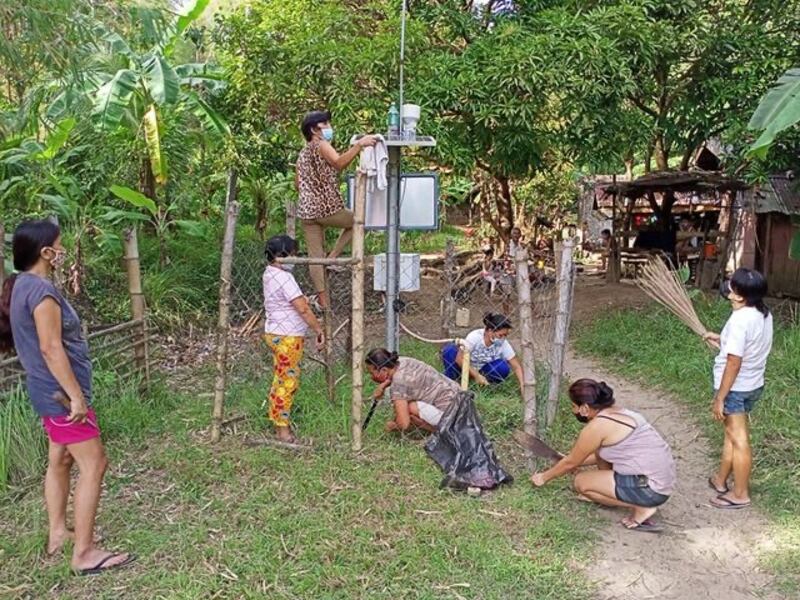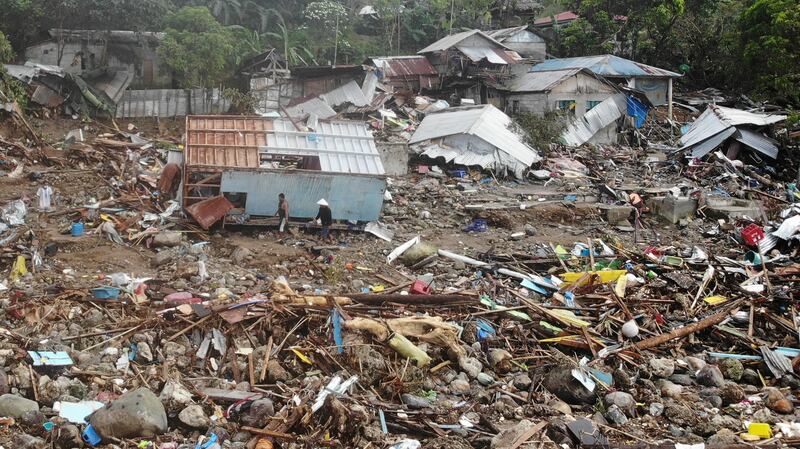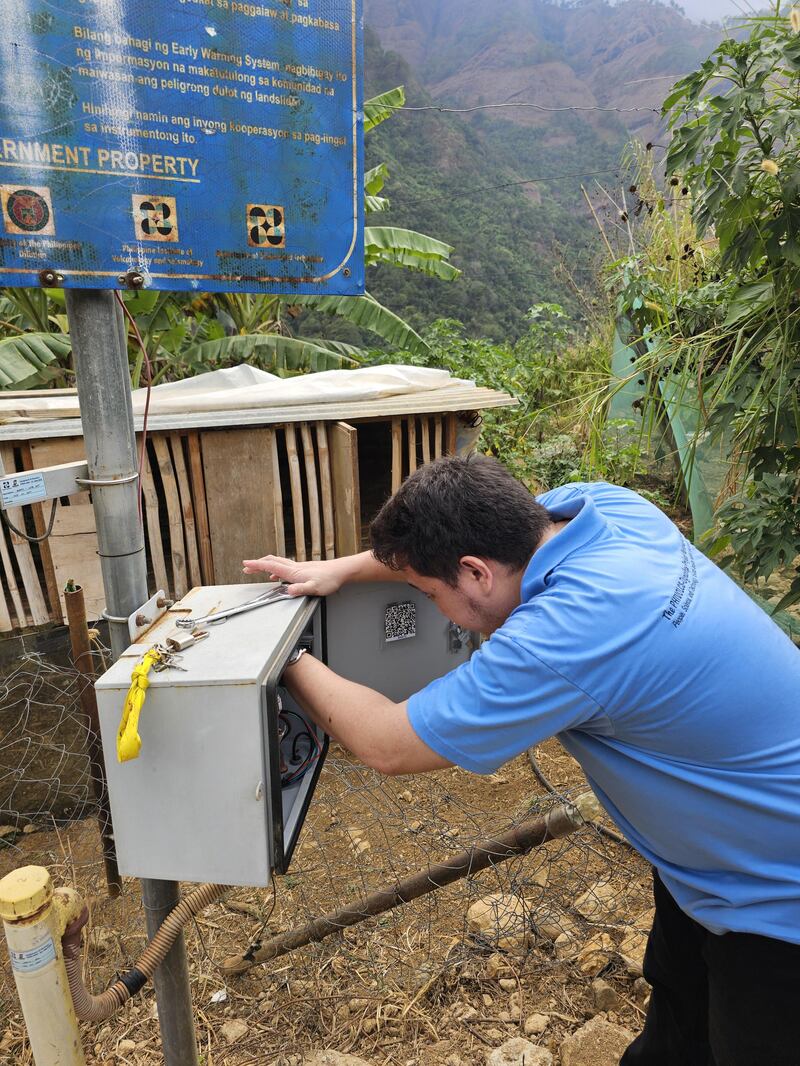The Philippines is set to slash its budget for an early warning system to detect landslides, despite being highly vulnerable to natural disasters amid climate change.
Experts and local government officials say that an impending 39% cut for money allocated for the so-called Dynaslope system could bring potentially serious consequences for communities at risk. The cut would see the system’s budget slashed to a proposed 25.5 million pesos (U.S. $434,000) next year, from 41.1 million pesos (U.S. $700,000) in 2024.
"Cutting its budget now – when typhoons are becoming stronger and more frequent – is a step in the wrong direction, risking lives and erasing hard-won progress in disaster resilience," the project team said in its position paper shared with lawmakers and obtained by BenarNews.
The early warning system installs sensors underground to detect movement and alert communities of impending deep-seated landslides. The archipelago nation is prone to typhoons and other storms whose rains can unleash deadly landslides.
The Dynaslope project – implemented by the Philippine Institute of Volcanology and Seismology (PHIVOLCS) in 2008 – brings together local governments and residents in disaster mitigation, by teaching them how to manually monitor cracks and other signs and to report them accurately.
The system operates 24/7 in 52 landslide-prone sites – from the northern Philippines to Mindanao in the south. It has 54 dedicated staff who handle operations, research, development, training, maintenance, and support.
“[The] Dynaslope Project’s ability to issue reliable, consistent, and actionable warnings may be compromised [with the budget cut]. Lapses could lead to catastrophic consequences, as vulnerable communities may face landslide threats without adequate preparation or response measures,” the project team said.

According to the 2024 World Risk Index, the Philippines is the most at-risk country for natural disasters, topping the list for a third consecutive year.
Dynaslope officers have lobbied Congress to grant it the same budget as this year. Congress is set to approve the country’s 6.5-trillion Philippine peso budget ($111.4 billion) for 2025 before 2024 ends, but it is likely too late in the process to undo that, a congressional leader said.
“Not enough time to increase their budget as we have to identify where to get it from,” Senate President Francis Escudero said in a message to BenarNews. Escudero said he only found out about the project’s dilemma recently.
“It is possible” to still increase the project’s budget if both the House and the Senate agree, but that is not an assurance, he said.
The budget cut would result in significant downsizing of the project, said Roy Kaimo, Dynaslope project chief technical specialist who manages daily operations.
“This [budget cut would mean] a slowdown, if not cessation, in the delivery of equally important services such as surveys, sensor system maintenance, research, and capability-development activities for communities and local government units,” Kaimo told BenarNews via email.
PHIVOLCS director Teresito Bacolcol told BenarNews on Nov. 28 that his agency could absorb some of Dynaslope’s staff “if we have extra funds.”

The project’s quest for a bigger budget has faced bureaucratic challenges.
It was informed of the proposed budget cut for next year as early as April, when the Marcos administration was preparing its 2025 National Expenditure Plan. The spending plan includes climate action and disaster resilience, among its priorities.
“[The government] said the budget cut was a consequence of the project’s low utilization rate in the previous years,” Kaimo said.
He said Dynaslope had submitted an appeal and justification, citing the COVID-19 pandemic, but to no avail.

In southern Bukidnon province, the Dynaslope system has helped ensure the safety of people in Magsaysay, a village at high-risk area for landslides, a local disaster risk official said.
“Because of the [Dynaslope] project, we now have an alert system in place,” Rogen Monteroyo, the disaster risk reduction officer for Kibawe town, told BenarNews in a phone interview.
But the impending cut could mean the area would receive less support for guarding against landslides, she warned.
The early warning system has also saved dozens of lives in other parts of the country.
On Sept. 12, 2017, a landslide occurred in Pinagkamilagan village in Quezon province but community leaders quickly “observed signs of instability, including a collapse of the lower portion of the slope,” Kaimo said. Because of this, he said, families were promptly notified and ordered to evacuate.
Weeks later, in Umingan, a village in the central Iloilo province, a landslide struck just minutes after community leaders advised residents to evacuate after noticing that the ground had dropped by several inches and become very soft.
The system has also raised awareness and changed behaviors among local officials and residents in Lipata village – another high-risk area – in Samar province, a local official told BenarNews in an interview last week
“Before, the government was focused on post-disaster recovery. Now, even the people are proactive. They know the risks in their area and what to do to avoid a catastrophe,” Paranas town mayor Eunice Babalcon said.
